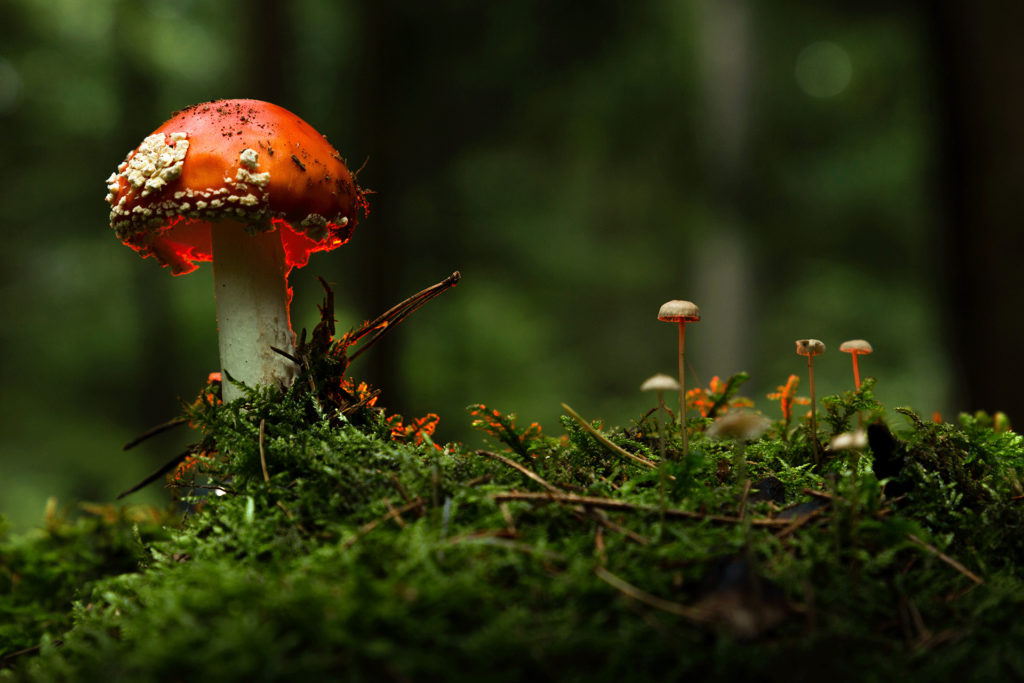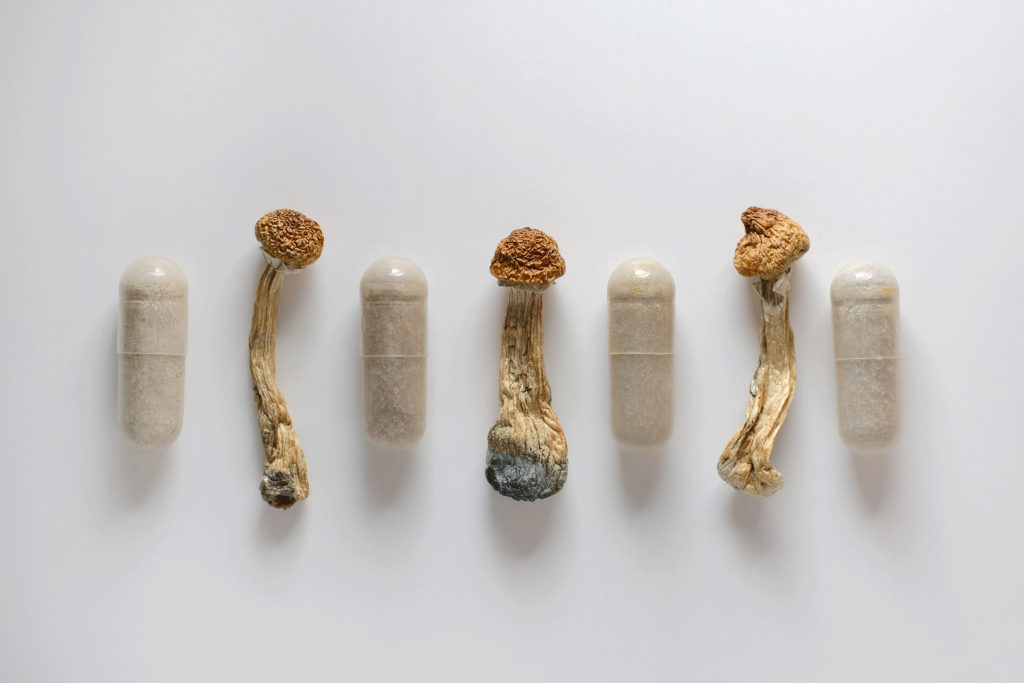Hallucinogens have been used for thousands of years for various purposes, from religious ceremonies to personal exploration. These compounds alter the perception of reality, inducing a wide range of fascinating effects. In this article, we will explore the world of hallucinogenic effects, including their types, mechanisms of action, potential benefits, and risks.
Types of Hallucinogenic Compounds
There are two main categories of hallucinogens: natural and synthetic. Natural hallucinogens are compounds found in plants and fungi, while synthetic hallucinogens are manufactured in a laboratory. Here are some examples of both:
A. Natural Hallucinogens
- Psilocybin: Found in certain species of mushrooms, psilocybin is a potent hallucinogen that induces visual and auditory hallucinations, altered sense of time and space, and euphoria.
- Mescaline: Found in the peyote cactus, mescaline produces vivid visual hallucinations, altered perception of body sensations, and emotional changes.
- Amanita Muscaria: This red and white mushroom contains muscimol, a potent hallucinogen that induces vivid visual hallucinations, altered perception of time, and changes in mood and perception.
- Ayahuasca: A brew made from a combination of plants found in the Amazon, ayahuasca produces intense visual and auditory hallucinations, emotional catharsis, and a sense of spiritual insight.
B. Synthetic Hallucinogens
- LSD: A synthetic compound first synthesized from ergot fungus, LSD induces intense visual and auditory hallucinations, changes in perception, and altered sense of time and space.
- PCP: Also known as “angel dust,” PCP induces dissociative effects, such as feeling disconnected from one’s body and surroundings, and can produce vivid hallucinations and delusions.
- 2C-B: A synthetic psychedelic drug that produces intense visual and auditory hallucinations, changes in perception, and mood changes.
Hallucinogenic Effects
Hallucinogenic effects can be divided into two main categories: visual hallucinations and euphoric effects.
A. Visual Hallucinations
- Types of Visual Hallucinations: Visual hallucinations can be complex and varied, including geometric patterns, landscapes, and objects that seem to be alive or moving.
- How Visual Hallucinations are Perceived: Visual hallucinations can be perceived as if they are real and can be difficult to distinguish from reality.
B. Euphoric Effects
- The Pleasurable Sensations of Euphoria: Euphoria is characterized by intense feelings of joy, pleasure, and well-being.
- How Euphoria is Experienced: Euphoria can be experienced as a sense of being connected to the universe, feeling more alive and present in the moment, and a feeling of love and empathy towards others.
Mechanisms of Action
The mechanisms of action of hallucinogens are complex and not fully understood. However, research suggests that they act on two main systems: serotonin receptors and the default mode network (DMN).
A. Serotonin Receptors
Most hallucinogens act on serotonin receptors in the brain, particularly the 5-HT2A receptor. Activation of these receptors is thought to play a crucial role in the induction of hallucinations and altered states of consciousness.
B. Default Mode Network
The DMN is a network of brain regions that are active during introspection and self-reflection. Hallucinogens are thought to disrupt the activity of the DMN, leading to altered perception and increased connectivity between different brain regions.
Potential Benefits of Hallucinogenic Effects
The potential benefits of hallucinogenic effects are becoming increasingly recognized and studied by researchers. Here are two potential benefits of hallucinogenic effects:
A. Therapeutic Use
One of the most promising potential benefits of hallucinogenic effects is their use in therapy. Studies have shown that some hallucinogenic compounds, particularly psilocybin and MDMA, can be effective in treating depression, anxiety, and post-traumatic stress disorder (PTSD).
Psilocybin, the active compound in magic mushrooms, has been shown to have long-lasting effects on depression and anxiety in cancer patients and those with treatment-resistant depression. In a clinical trial at Johns Hopkins University, participants who received psilocybin-assisted therapy reported significant improvements in depression, anxiety, and quality of life.
MDMA, commonly known as ecstasy, has also shown promise in treating PTSD. In a study published in the Journal of Psychopharmacology, participants who received MDMA-assisted therapy reported significant reductions in PTSD symptoms, with 54% no longer meeting the criteria for PTSD after treatment.
B. Personal Growth and Insight
In addition to their therapeutic potential, some people use hallucinogens for personal growth and insight. Many people report feeling a greater sense of connectedness and spirituality, as well as insights into their own behavior and thought patterns. Some even report a sense of profound meaning and purpose in their lives after using these substances.
Risks and Precautions
While the potential benefits of hallucinogenic effects are intriguing, it is important to consider the potential risks and precautions associated with their use.
A. Risks of Bad Trips
One of the most well-known risks of hallucinogen use is the possibility of a “bad trip.” This can involve overwhelming anxiety, paranoia, and other negative emotions. While these experiences can be distressing, they are generally not dangerous on their own. However, they can be particularly challenging for people with pre-existing mental health conditions.
B. Risks of Psychosis and Other Mental Health Issues
In rare cases, hallucinogen use can trigger psychotic episodes or exacerbate existing mental health conditions. This is particularly true for people with a history of psychotic disorders or other serious mental health issues. It is also important to note that some hallucinogens, such as PCP, have been associated with violent behavior.
It is recommended that anyone considering using hallucinogens do so in a safe and controlled environment with a trusted and experienced guide.
The world of hallucinogenic effects is a fascinating and complex one. While they have been stigmatized and demonized for many years, recent research has shed light on their potential benefits in therapy and personal growth. However, it is important to approach their use with caution and respect for their potential risks and precautions.
FAQs
Are hallucinogens addictive?
No, hallucinogens are generally not considered to be addictive in the same way that drugs like opioids or cocaine are.
How long do the effects of hallucinogens last?
The duration of hallucinogenic effects varies depending on the specific compound and individual factors such as dosage, tolerance, and metabolism. Generally, the effects can last anywhere from a few hours to several days.
Can hallucinogens be used safely?
Hallucinogens can be used safely in a controlled and supervised environment with a trusted guide. However, they can be dangerous when used in an unsupervised or recreational setting.
Are there any legal hallucinogens?
Some natural hallucinogens, such as peyote and ayahuasca, are legal in certain contexts such as religious or cultural ceremonies. Amanita Muscaria is currently legal and can be buy online in most of the United States.


